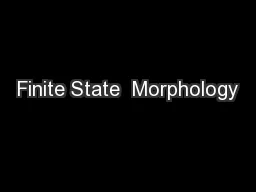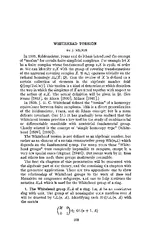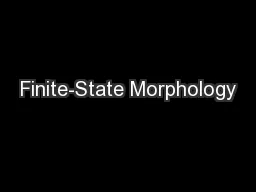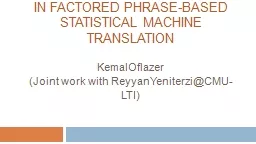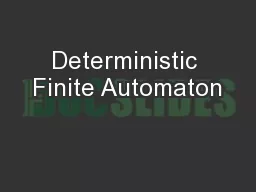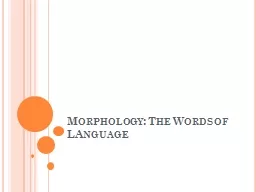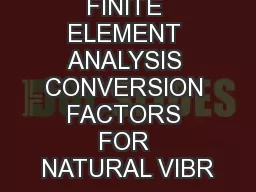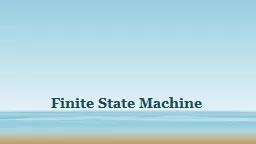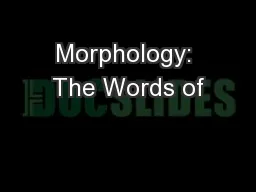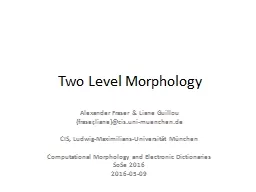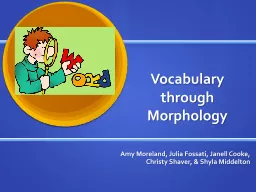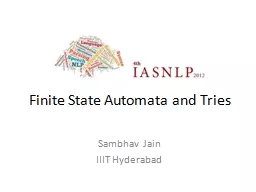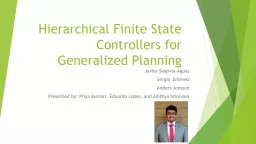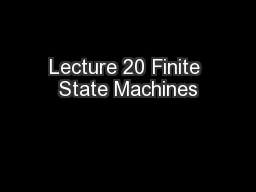PPT-Finite State Morphology
Author : trish-goza | Published Date : 2018-02-26
Alexander Fraser amp Luisa Berlanda frasercisunimuenchende CIS LudwigMaximiliansUniversität München Computational Morphology and Electronic Dictionaries SoSe
Presentation Embed Code
Download Presentation
Download Presentation The PPT/PDF document "Finite State Morphology" is the property of its rightful owner. Permission is granted to download and print the materials on this website for personal, non-commercial use only, and to display it on your personal computer provided you do not modify the materials and that you retain all copyright notices contained in the materials. By downloading content from our website, you accept the terms of this agreement.
Finite State Morphology: Transcript
Download Rules Of Document
"Finite State Morphology"The content belongs to its owner. You may download and print it for personal use, without modification, and keep all copyright notices. By downloading, you agree to these terms.
Related Documents

